April 2024 Fire Report: We Cannot Be Complacent
We had 71 fires, of which 35 occurred in waste, paper and plastic operations, 25 occurred in scrap operations, four occurred at organics operations, three occurred in e-scrap operations, two occurred at construction and demolition operations and one occurred at a rubber recycling facility. Four of these events were confirmed as catastrophic, but that number is highly conservative based on the public reporting without long-term visibility of the actual damage stemming from these incidents.
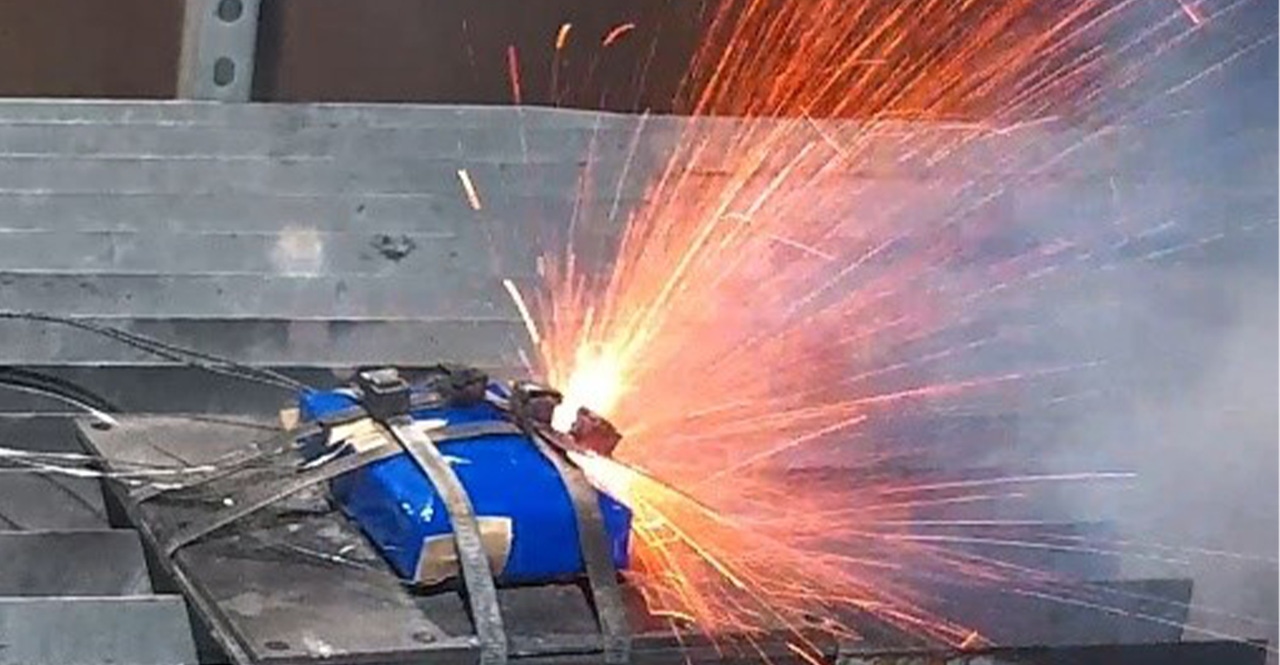
I feel like a weight has been lifted off my shoulders. Imagine the feeling when you finish a big project or wrap up your yearly taxes. My “7th Annual Reported Waste & Recycling Facility Fires” report was released on March 12. I presented and recorded my findings on a webinar moderated by Kirk Sander from the National Waste & Recycling Association, which you can watch below if you are interested.
If you are an avid reader, you know I have not been compiling my monthly data for the last three months. This month, I more than made up for it with a full three months of data for everyone to analyze.
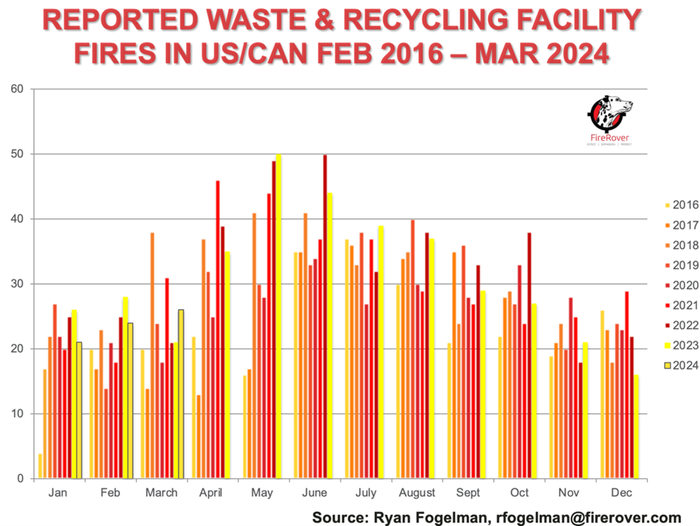 There was very little out of the ordinary. We had 71 fires, of which 35 occurred in waste, paper and plastic operations, 25 occurred in scrap operations, four occurred at organics operations, three occurred in e-scrap operations, two occurred at construction and demolition operations and one occurred at a rubber recycling facility. Four of these events were confirmed as catastrophic, but that number is highly conservative based on the public reporting without long-term visibility of the actual damage stemming from these incidents. Overall, the fire incidents for January through March of this year were in line with 2022 and only four incidents behind last year's 75 but behind the 2018 spike of 83 events. At Fire Rover, we successfully responded to over 200 fire incidents at our Clients’ facilities.
There was very little out of the ordinary. We had 71 fires, of which 35 occurred in waste, paper and plastic operations, 25 occurred in scrap operations, four occurred at organics operations, three occurred in e-scrap operations, two occurred at construction and demolition operations and one occurred at a rubber recycling facility. Four of these events were confirmed as catastrophic, but that number is highly conservative based on the public reporting without long-term visibility of the actual damage stemming from these incidents. Overall, the fire incidents for January through March of this year were in line with 2022 and only four incidents behind last year's 75 but behind the 2018 spike of 83 events. At Fire Rover, we successfully responded to over 200 fire incidents at our Clients’ facilities.
We Cannot Become Complacent
When I started working for Fire Rover in 2015, you could say I knew nothing. I knew about sales and marketing, but I didn’t know anything about waste and recycling, nor did I know anything about the fire protection industry. But I kept my nose to the grindstone and soaked up everything I could learn. I read reports, reached out to many professionals in both industries and asked questions when I came across something I did not know the answer to. Since then, I have learned from thousands of folks, including mentors, colleagues, subject matter experts and now friends.
When I started learning about the fire protection industry, I was told things don’t change very often. I was told that if our Fire Rover solution works the way I shared it did, we would be lucky to have our solution written into a National Fire Protection Association (NFPA) code in 20 years. I was told they would never accept our solution because it was not the “water, water, water” approach the industry has used for over a century in sprinklers and deluge systems.
So, I got to work. Fortunately, I had a booth at the 2016 FDIC International annual conference in Indianapolis. My partners were working at another show, so I was in the booth alone for the three days the expo hall was open. I spoke to hundreds of attendees who worked on the frontlines: firefighters, fire chiefs, fire engineers, volunteers, professionals, sprinkler designers, insurance brokers, military personnel and more. At first, they all joked that Fire Rover would put them out of a job, but the idea of our solution was fully supported when I pressed it as a way to keep employees and fire professionals safe on the frontlines.
One of the nights, I was invited to dinner at Harry & Izzy’s with a fire company from Freeport, New York, whose Chief, Matthew N. Colgan, presented me with my first challenge coin. In his impromptu speech, he mentioned how our Fire Rover system, which at the time protected just a few scrap facilities and a couple of hazmat operations, could be used to remotely fight a fire incident at a scrap yard or hazard material operation. He said at the end of the day, if lives are not in danger and everyone has evacuated safely, firefighters are not putting their lives in danger for these types of industrial facilities where the piles and materials are changing daily. It’s not worth one of their own not coming home to their family at the end of a shift. The story's kicker is that the company and a Boston company eating at the table next to us stood up and joined the ovation. As you can imagine, I was floored, but I also felt a great responsibility to help ensure we could put as few firefighters in danger as we could. I knew this would take years to accomplish and questioned myself internally whether this could be achieved in this highly regulated environment.
So, I went on a mission to understand the code. In 2016, I joined the NFPA 401 Committee, which, after years of meetings and working through COVID-19 for days on the phone, taught me more than I feel I was able to contribute. The committee just released its report on “Recommended Practice for the Prevention of Fires and Uncontrolled Chemical Reactions Associated with the Handling of Hazardous Waste.” The title alone is a mouthful, and our team comprises so many fantastic subject matter experts that came together to get this project to the finish line.
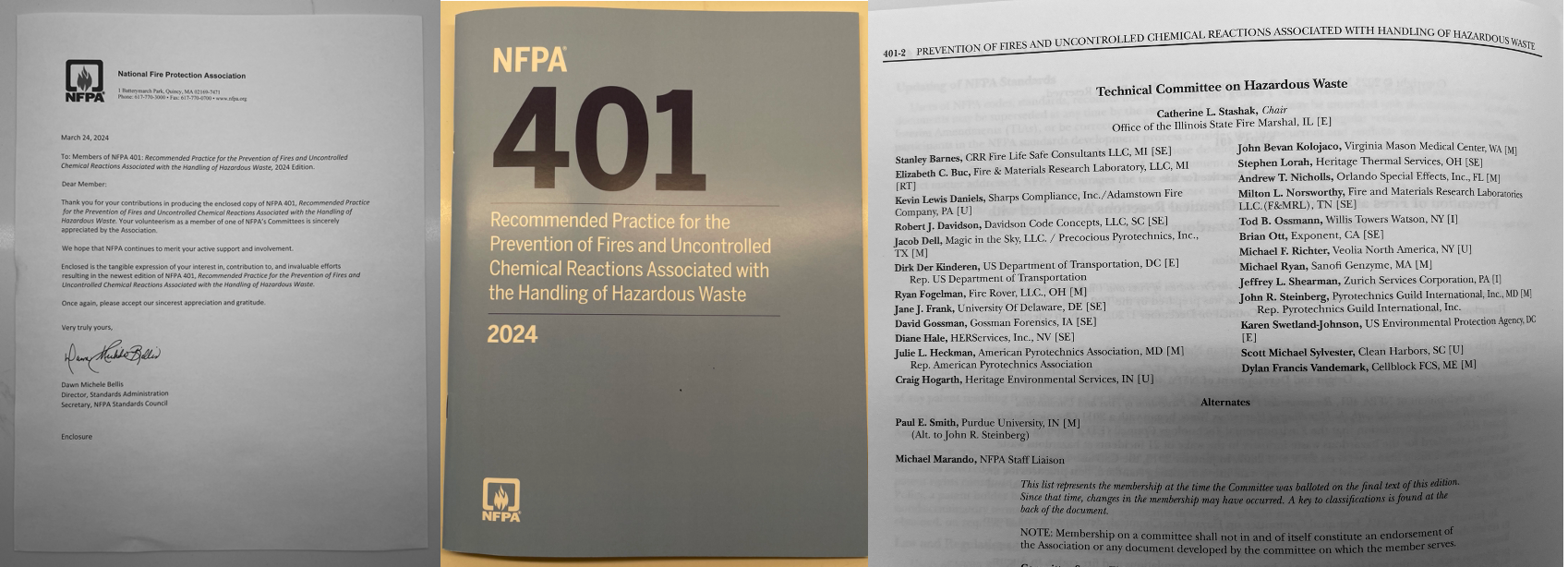
The Li-ion Epidemic
Then came the onslaught of batteries. They inundated the waste and recycling industry, and like many others, I watched as the problem unfolded across the globe, resulting in significant and catastrophic losses to facilities. We added a few key clients who committed to investing in our Fire Rover solution early on, which gave us the numbers and confidence that our solution worked. Our virtual firefighters are remotely on the frontlines, working with our clients and the fire professionals for the same mission: not to have any “major” fires. From my frontline position at Fire Rover, I saw these batteries exploding and causing havoc firsthand on tipping floors, scrap metal piles, testing environments or any time they were on fire.
Many folks in the industry across the globe started looking for solutions. Operators in Europe moved toward automated fire suppression systems, which looking back resulted in big investments with little results as these solutions turned out to be fraught with issues. In the U.S., some operators relied on tried and true methods of “water, water, water,” which included equipment like oscillating nozzles, which only created messes and continued inefficient firefighting techniques, resulting in downtime and the cleanup of a significant amount of firewater.
Fast forward eight-plus years, and I believe we have proven that our patented solution is helping the waste and recycling industry in the U.S. and Canada, and now Australia, the UK and France have won the battle not only against lithium-ion battery fires in the waste and recycling streams but traditional fire/explosion hazards such as chemicals, accelerants, pressurized tanks and hot loads that have been causing havoc for decades.
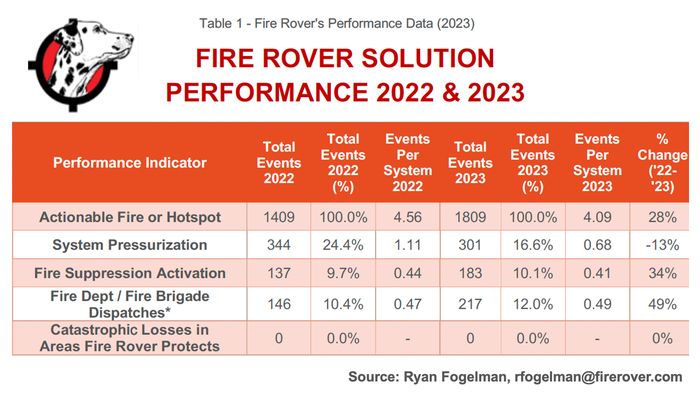
To be clear, I do not give all the credit to Fire Rover for not having catastrophic losses at our clients’ sites. Our clients have implemented the proper operational best practices and invested in way more than just our solution to protect their employees and operations. After all, it takes a number of different layers of firefighting equipment, procedures and training to stop a major fire from occurring at these facilities.
We could be satisfied resting on our laurels and the expertise we have gained, but I have been doing all I can to stay current on trends in the waste and recycling and fire protection industries. The reality is there is a lot going on in battery safety across the entire value chain, and the more we began protecting battery recyclers and manufacturers, the more I needed to learn about that particular occupancy.
For example, if you read last month’s article, “Waste & Recycling’s Frontline: A Toxicologist’s Perspective,” I mentioned my concern with the toxic chemicals being emitted from these hazards. Although we are now in five countries, I was really unsure what was happening in other parts of the world. So in January of this year, I enrolled in the BatteryMBA program and joined a cohort that consisted of 50-plus battery industry professionals from 20 countries in an effort to grow my network and learn more about the full battery value chain.
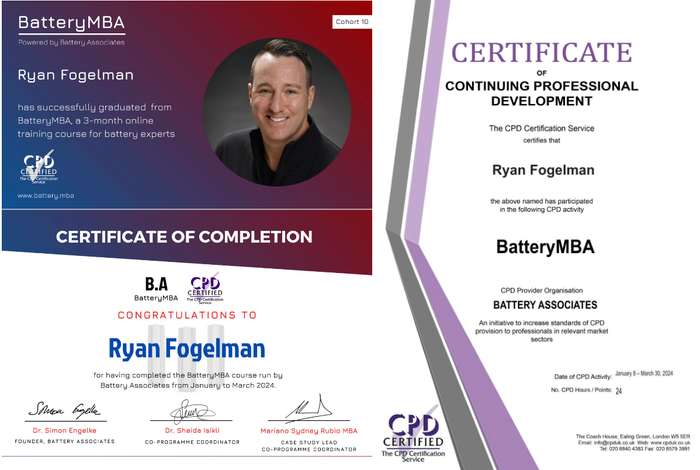
During this three-month program, we learned from highly respected industry subject matter experts about critical mineral mining through to the end of life (EOL) in reuse and recycling. What I came away with was how big this problem is. In waste and recycling, we only see the EOL, but the supply chain has players and processes across the supply chain that contribute to or cause the problems we are facing in our operations.
The most exciting part of the entire journey is we just completed and went live with our largest installation yet for a major battery recycler in the U.S. The operation, which is more than 350,000 square feet, has a 250,000-gallon water tank, fire pump, inductor of an NFPA 18A encapsulator agent, 106 detection zones and 57-plus nozzles. Fire Rover is the “primary” and only fire protection solution in the entire facility, which, as most of you know by now, can be a dangerous and fire-prone process.
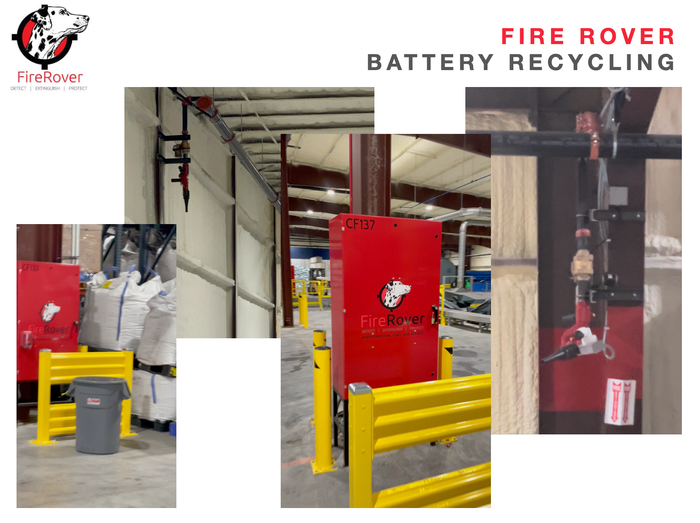
We need to remain diligent as we continue to transition the world toward more battery-powered sources. All hands-on deck are needed at all levels to ensure we deal with these hazards safely and with the appropriate response. The public needs to make sure to recycle personal storage and electronics at the proper drop-off locations; fire professionals need to be trained and equipped with the proper personal protective equipment to fight these fire incidents successfully, and the fire safety industry needs to develop the proper standards to give local jurisdictions the right recipe for success in business with these occupancies. Like any problem, it takes layers and layers of solutions to ensure we keep our waste and recycling operators focused on doing their jobs and not sitting behind the eight ball waiting for a catastrophic event to occur like it did at Metrosite and so many others over the past decade.
Conclusion
If you are attending WasteExpo 2024 in Las Vegas, Dr. George Thompson from Chemical Compliance Systems will be joining me and an all-star panel that includes David DeVito from ReSource Waste Services and Bob Shallenberger from Interco to discuss “Dealing with Lithium-ion Battery Fires on the Frontlines” on Monday, May 6 at 3:30 p.m. MST. In addition, Dr. Thompson and I will be presenting at the Northeast Recycling Council Spring 2024 Conference on Tuesday, April 30 at 11:15 a.m. ET in a session on “Safety in Material Recovery and Processing Workplaces.” I hope to see you all over the next couple of months at the ISRI Convention and Exposition, WasteExpo 2024, Northeast Recycling Council Spring 2024 Conference, FDIC International, 2024 NFPA Conference & Expo, American Society of Safety Professionals Professional Development Conference and Garbageman’s Invitational.
Ryan Fogelman, JD/MBA, is vice president of strategic partnerships for Fire Rover. He is focused on bringing innovative safety solutions to market, and two of his solutions have won the distinguished Edison Innovation Award for Industrial Safety and Consumer Products. He has been compiling and publishing the “Reported Waste & Recycling Facility Fires In The US/CAN” since February 2016 and the “Waste & Recycling Facility Fires Annual Report.” Fogelman regularly speaks on the topic of the scope of fire problems facing the waste and recycling industries, early detection solutions, proper fire planning and early-stage fire risk mitigation. Additionally, Fogelman is on the National Fire Protection Association’s Technical Committee for Hazard Materials. (Connect with Ryan on LinkedIn at https://www.linkedin.com/in/ryanjayfogelman or email at [email protected])
About the Author
You May Also Like




.png?width=300&auto=webp&quality=80&disable=upscale)